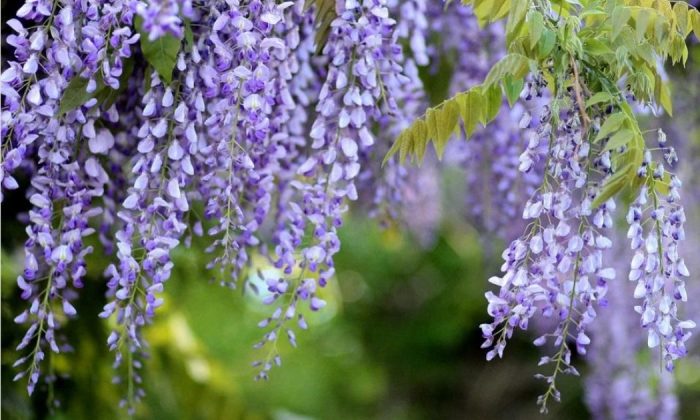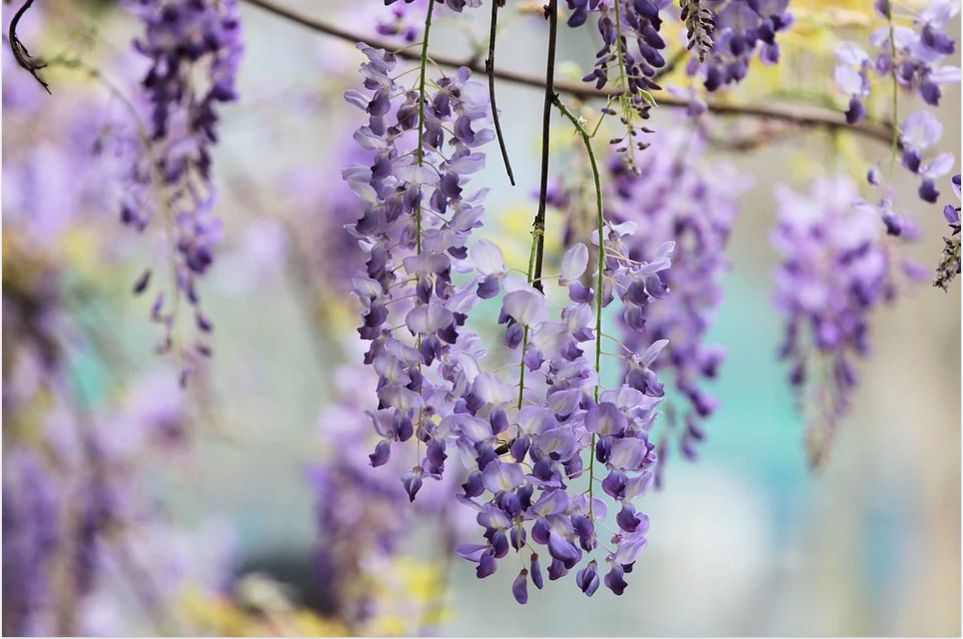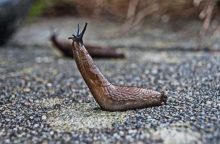Wisteria is the nicest climbing plant, but you need to control its growth

When in bloom, wisteria is really beautiful and it is often used to boost the beauty of garden gazebos or various walls. This climbing plant is relatively undemanding, and if you take good care of it, will reward you with nice grape-shaped purple (most often) flowers. But this beautiful plant also has its disadvantages: firstly, it is poisonous (not suitable for households with small children or pets) and secondly, it can cause roof-related problems during flowering (it actually clogs gutter pipes or may deform various decorative elements in your garden).
Growing wisteria
Wisteria likes the sun, so make sure to choose a sunny spot with soil rich in nutrients and calcium and slightly moist. Surprisingly, wisteria does not mind frost. On the contrary. After freezing it “jumps” and blooms even nicer! If you want to enjoy wisteria year after year, give it sufficient support – stakes. Regular pruning is also important to control its wild and unrestrained growth. The plant grows quite quickly – which is great if we want to quickly “hide” an ugly wall or something…
Photo: Pixabay
An “aggressive liana”
Wisteria grows really fast and can reach a height of up to 15 meters. This is why you should control its growth by regular pruning and by providing growing stakes – to force it to grow where you want. Supportingstakes must be really strong – for example steel rods anchored in a concrete foundation, because the weight of this fast growing plant increases to the point that it could damage fragile section or decorative elements in your garden including fences, roof coverings, etc. Do not plant wisteria near antennas or satellite dishes.
Prune regularly to control growth
For the above reasons you should prune wisteria regularly. You will not harm the plant by pruning. Proper pruning will force it to give you richer and nice flowers. And when should you prune? In the spring, ideally in April. Last year’s shoots need to be shortened down to three buds, counted from the main stem, and to prevent wild-growing inflorescence. Cut off extra shoots at the end of winter or at the beginning of autumn. A rather radical cut is also ok – cut all branches that do not wrap around a stake or do not grow from the root- cut down to the branch collar on the main, strongest branch.
Preview photo: Pixabay

Gardening is my hobby, I have a lot of experience and I am happy to share it.









0 comments